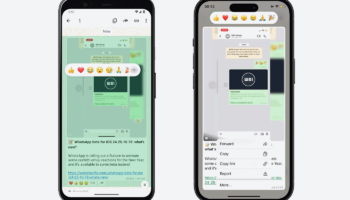New study highlights the ongoing importance of open source
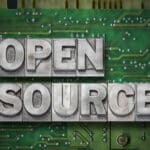
Free and Open Source Software (FOSS) has become a critical part of the modern economy and it's estimated that up to 96 percent of codebases now include it.
In order to understand the impact of open source The Linux Foundation, in collaboration with the Laboratory for Innovation Science at Harvard, commissioned its latest study into the space and today announces the release of the Census III of Free and Open Source Software -- Application Libraries report.
SMEs put at risk by poor mobile security practices

A new report finds that 35 percent of small business employees or owners report clicking on a phishing link via mobile.
The research, carried out by OnePoll for CyberSmart, among 250 small-medium enterprise business owners or leaders in the UK also finds 30 percent of respondents report losing or having had stolen a mobile phone containing sensitive corporate information, leaving their business more vulnerable to potential cybercriminal activity.
Big spend on enterprise AI doesn't always deliver big returns

New research from Digitate reveals that while 92 percent of European organisations have implemented AI and automation, many lack a strategic approach to maximise the impact.
The study, based on a survey of 900 IT decision-makers in enterprises across Europe, finds that organisations have invested on average, €103.4M ($108M) in AI and automation over the last two years, with over half (59 percent) spending up to €295M ($309M). These investments have yielded significant returns, with 86 percent of organizations reporting a ROI averaging €154.7M ($162.4M).
Identity threat detection and response use grows despite challenges

Organizations are facing increasingly sophisticated threats to their identity infrastructure so it's not surprising that a new survey of over 370 IT professionals shows use of identity threat detection and response (ITDR) technology is growing, though many are running into roadblocks to unlocking its full potential.
The study from Quest Software shows 84 percent of organizations are reaping benefits from their ITDR efforts, even if it hasn’t been fully implemented. Over one in three (36 percent) say their expectations have been fully met or exceeded.
How useful is GenAI in software development? [Q&A]
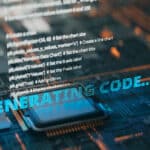
Generative AI (GenAI) holds a lot of promise for software developers: an ability to help them ship code faster, improve productivity, and reduce time spent on menial and repetitive tasks. But how much of that promise are GenAI coding tools actually delivering -- and how much is hype?
We spoke with Matt Hoffman, product manager and data analyst at Uplevel, an engineering intelligence platform that uses data from across developer tools and collaboration platforms to help engineering leaders drive organizational improvements. Uplevel's data science team, Uplevel Data Labs, recently studied the impact of Copilot usage on developer productivity.
Meta wants to harness nuclear power for AI but can Facebook-founder Mark Zuckerberg be trusted?

Meta has announced an ambitious plan to integrate nuclear energy into its sustainability strategy, aiming to secure up to 4GW of new nuclear generation capacity in the United States by the early 2030s. The goal is to power its growing network of data centers and support artificial intelligence innovation while contributing to grid decarbonization. This initiative, while bold, raises critical questions: can Mark Zuckerberg, the man behind Facebook’s data scandals, be trusted to influence the nuclear energy landscape?
Meta’s Request for Proposals (RFP) seeks nuclear energy developers to deliver scalable and cost-effective projects. Unlike the company’s prior ventures into renewable energy sources like solar and wind, nuclear projects come with higher costs, stricter regulatory oversight, and longer development cycles. Meta claims this step is necessary to meet the energy needs of its sprawling infrastructure and AI growth while advancing clean energy technologies. However, critics argue that giving Zuckerberg’s empire a foothold in nuclear energy raises serious concerns about oversight and safety.
Holiday season cybersecurity alert: QR code phishing scams

Thanks to the proliferation of smartphones, QR code usage globally has surged by 57 percent, and by 2025, it is forecast to increase by another 22 percent. And up to eight new QR codes are generated per minute globally.
It is no surprise then why QR codes are everywhere -- on billboards, shopping malls, event brochures, restaurant menus, charity websites, parking spaces, you name it! Of course, the genius of QR codes is their ease of use and convenience. For users, one scan and the job is done, be that registering for an event or purchasing an item.
Is EasyOS Scarthgap 6.5 the perfect alternative to Windows 11 and mainstream Linux?
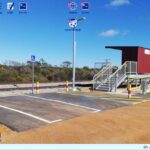
EasyOS Scarthgap 6.5 might just be the operating system you didn’t know you needed. As an experimental Linux distribution built with a lightweight and optimized architecture, it offers a fresh approach to desktop computing. With its innovative container technology, streamlined package management, and unique origins in Puppy Linux, EasyOS could serve as a viable alternative to both Windows 11 and traditional Linux distributions, such as Nitrux.
For those frustrated with the resource-heavy nature of Windows 11, EasyOS Scarthgap delivers a more efficient experience. Its foundation in OpenEmbedded ensures minimal bloat, while still providing access to modern applications through AppImage and Flatpak integration. And unlike mainstream Linux distributions that often mirror Windows’ complexity with package management systems like apt or yum, EasyOS simplifies things without compromising functionality.
Cyberwarfare 2025: The rise of AI weapons, zero-days, and state-sponsored chaos

As we approach 2025, the notion of warfare is increasingly shifting from the physical to the digital domain. Cyberwarfare, once considered a supplementary tool for traditional military operations, has now emerged as a primary weapon for nations seeking to assert dominance or inflict damage on their adversaries without the need for physical conflict. Simply put, it is easier, requires fewer resources, and can often cause maximum damage without sustained efforts. The rise of AI-driven cyber weapons, zero-day vulnerabilities, and state-sponsored cyberattacks is creating an unprecedented era of digital warfare.
Nation-states and rogue factions are rapidly integrating cyberattacks into their military arsenals, with cyber operations becoming a first-strike option in geopolitical conflicts. By targeting critical infrastructure -- such as energy grids, communication networks, transportation systems, and supply chains -- these attacks can cripple an entire national infrastructure and create mass chaos without a single physical shot being fired. This shift toward cyber warfare reduces the immediate risk of physical casualties, and in turn allows state actors to engage in asymmetric warfare, where a smaller, technologically advanced nation can punch well above its weight.
Today is the day! Say goodbye to Microsoft Windows 11 -- Nitrux Linux 3.8.0 is the OS you've been waiting for

Let’s be honest: Windows 11 gets the job done, but for many of us, it feels more like a routine than a revelation. It’s the dependable choice we stick with because it’s what we’re used to, even when its frequent problematic updates, resource demands, and occasional hiccups make us wonder if there’s a better option out there. If you’ve been quietly considering a change but haven’t found the right fit, there’s a promising alternative worth exploring.
Nitrux offers a fresh perspective on what an operating system can be. Designed for speed and simplicity, it delivers a streamlined experience with its unique NX Desktop and lightweight foundation. It feels modern, responsive, and uncluttered -- an ideal choice for those who value efficiency and aesthetics.
HR and IT are among top-clicked phishing subjects
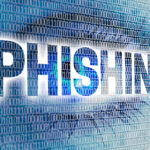
A new report reveals that HR and IT-related phishing emails claim a significant 48.6 percent share of top-clicked phishing types globally.
The research from KnowBe4 also shows that among large companies -- 1,000+ employees -- the most targeted industries are healthcare and pharmaceuticals with a Phish-Prone Percentage (PPP) of 51.4 percent, insurance on 48.8 percent and energy and utilities on 47.8 percent.
MSI Claw 8 AI+ and Claw 7 AI+ handhelds offer Windows 11 Copilot+ capabilities and powerful gaming performance

MSI has introduced its latest handheld gaming devices, the Claw 8 AI+ and Claw 7 AI+. These devices (available here) are designed to deliver powerful performance and energy efficiency in compact, ergonomic designs. Powered by the next-generation Intel Core Ultra 7 processor (Series 2), they also feature advanced cooling technology for extended gaming sessions.
The Claw 8 AI+ sports an 8-inch FHD+ touchscreen with a 1920x1200 resolution and a 120Hz refresh rate. It boasts 100 percent sRGB color accuracy, a brightness of 500 nits, and supports VRR on an IPS-level panel. This ensures a visually stunning experience for gaming and media.
Two-thirds of office workers bypass security protocols

Almost two-thirds of office workers admit they've prioritized productivity over safe cybersecurity practices -- 63 percent also own up to using a corporate device to access social media, messaging or entertainment sites/applications.
Research from identity and access management company CyberArk also shows that 80 percent access work applications from personal devices, with C-suite executives being among the worst offenders.
How to address cloud-native security risks in 2025

Gartner predicts that public cloud end-user spending will surpass $675 billion by the end of 2024. In 2025, as AI systems proliferate and organizations increasingly store sensitive data in public cloud infrastructure, many stakeholders will begin demanding more robust cloud security measures.
Additionally, cybercriminals are becoming more inventive than ever. They now rely on AI and machine learning (ML) to improve and iterate on their methods, just as we all do. Interestingly, despite advances in cloud security, research suggests that common vulnerabilities like unenforced multi-factor authentication (MFA) and long-lived credentials continue to expose many companies to risk. Patching these known vulnerabilities will be crucial next year.
Waiting for Microsoft Windows 12 is a mistake when you can upgrade to Linux today

The tech world is full of rumors about Windows 12, the supposed savior of Microsoft’s operating system lineup. The company has been tight-lipped about details, but leaks suggest it’s aiming to be a more cloud-focused, AI-driven operating system. That all sounds fancy, but here’s the truth -- waiting for Windows 12 might not be the smart play. If you’re tired of the bloat, the constant updates, and the never-ending resource demands, there’s an alternative you can embrace today: Linux.
Microsoft has spent years refining Windows, but with every iteration, it seems to get heavier, slower, and, frankly, more intrusive. Windows 12 promises new features like AI enhancements and tighter cloud integration, but do you really need an AI telling you how to use your PC? For most users, these features feel like unnecessary fluff rather than meaningful improvements. Instead of waiting for an operating system that may or may not meet your needs, you could switch to Linux -- a free, lightweight, and privacy-respecting solution that puts you in control.
© 1998-2024 BetaNews, Inc. All Rights Reserved. Privacy Policy - Cookie Policy.

